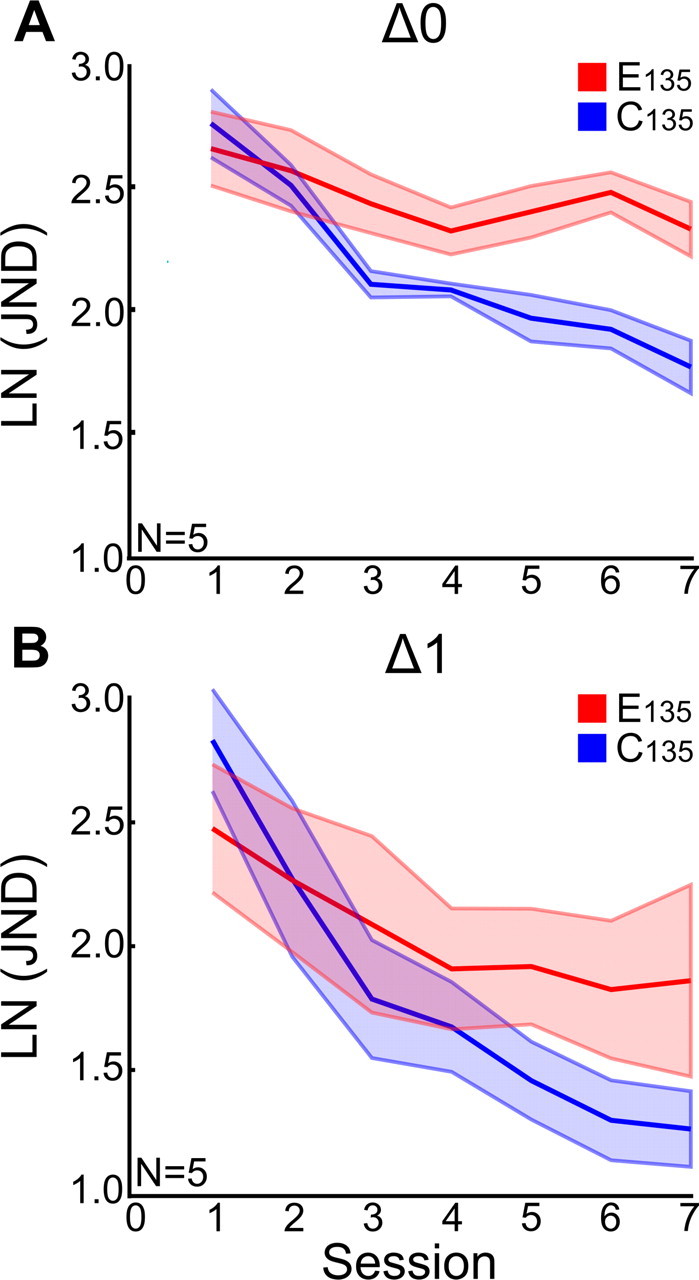Figure 4.

Comparing the fast learning part of the learning curves between the different P1–P2 intervals does not reveal time-limited consolidation. Here, a comparison of fast learning is shown at the Δ0 h (A) and Δ1 h intervals (B). A, The first seven sessions for the E135 and C135 conditions in the Δ0 h P1–P2 interval, up to the average IP. B, The first seven sessions for the Δ1 h interval. These plots show the two intervals that are comparable to the intervals used in the paper of Seitz et al. (2005), who found time-dependent behavioral interference between two Vernier tasks during early learning. A repeated-measures ANOVA on our data [Condition (E135, C135) × Session (7) × P1–P2 Interval (Δ0 h, Δ1 h)] failed to find a significant interaction between Condition and Interval (F(1,8) = 0.330, p = 0.581). Also, for redundancy, a comparison was made between Δ0 with all other P1–P2 intervals in a combined repeated-measures ANOVA; again, the interaction between Condition and Interval was not significant (F(5,23) = 0.374, p = 0.861).
